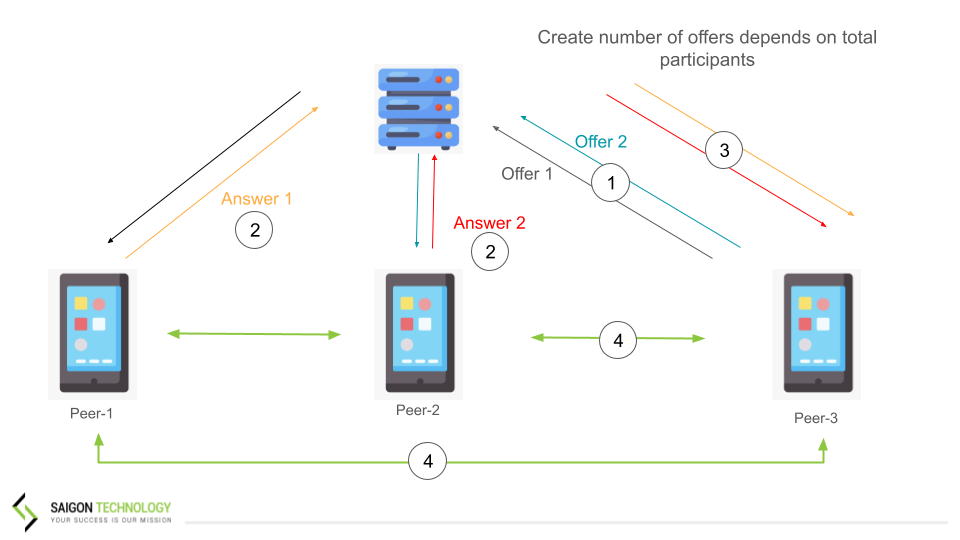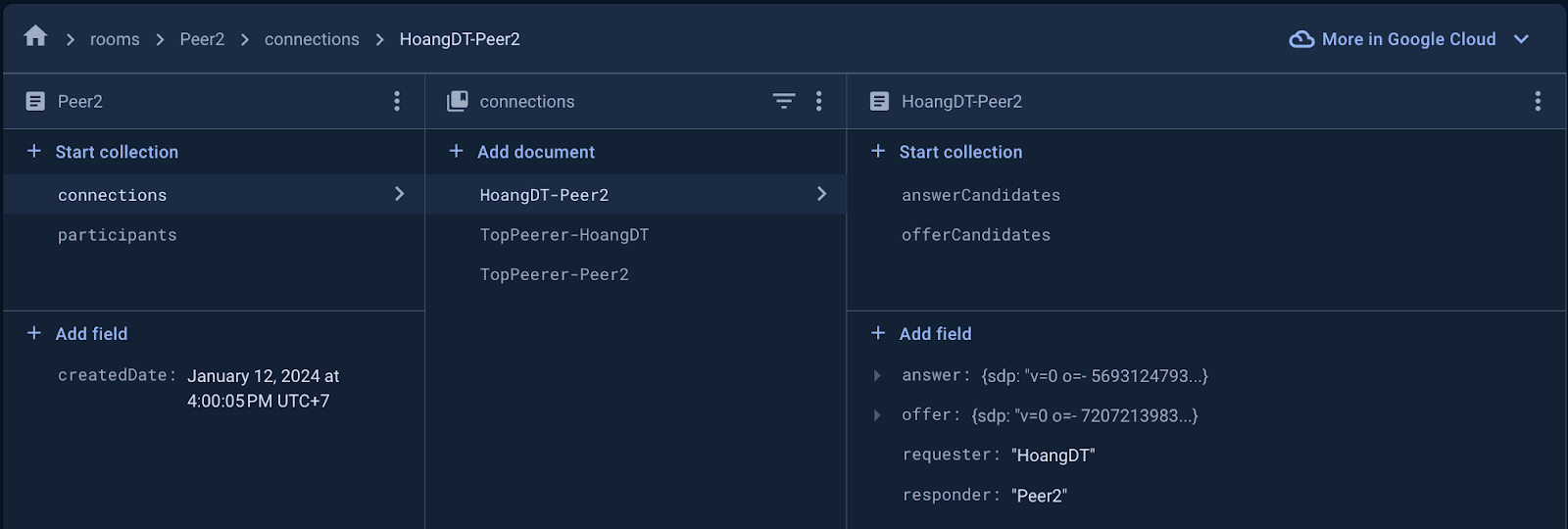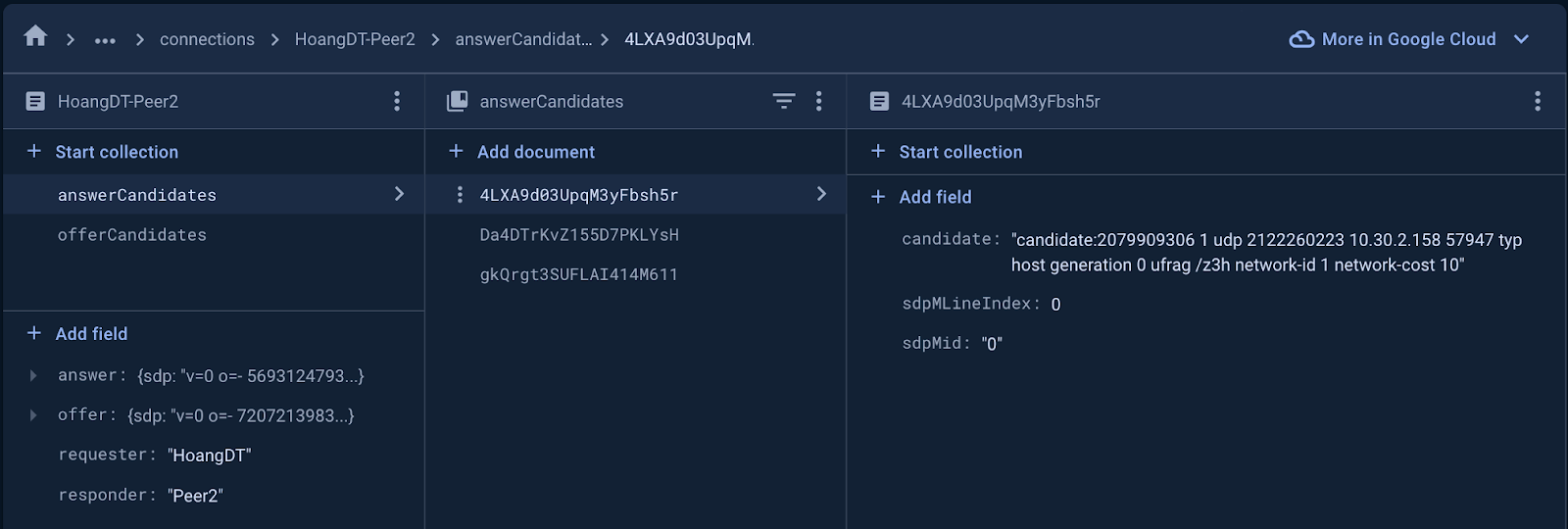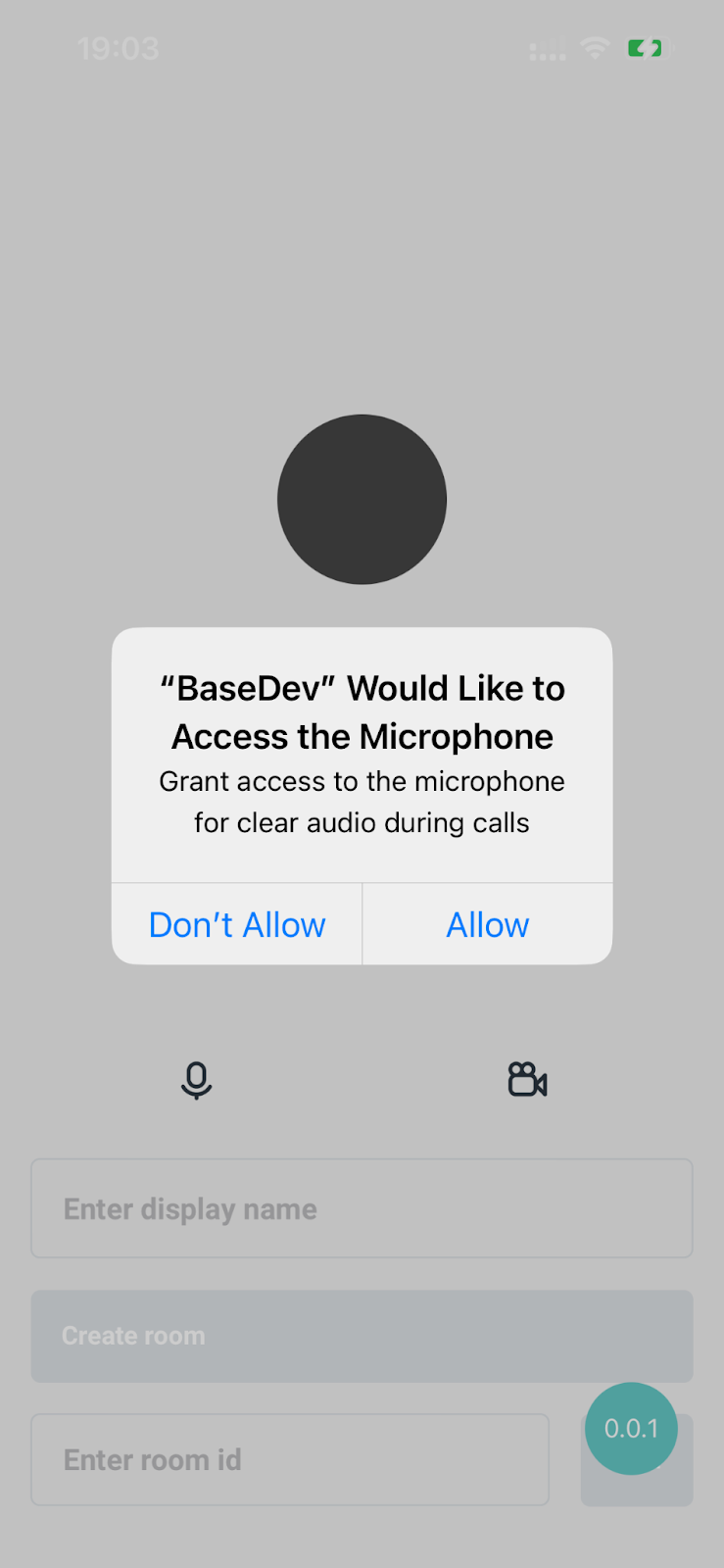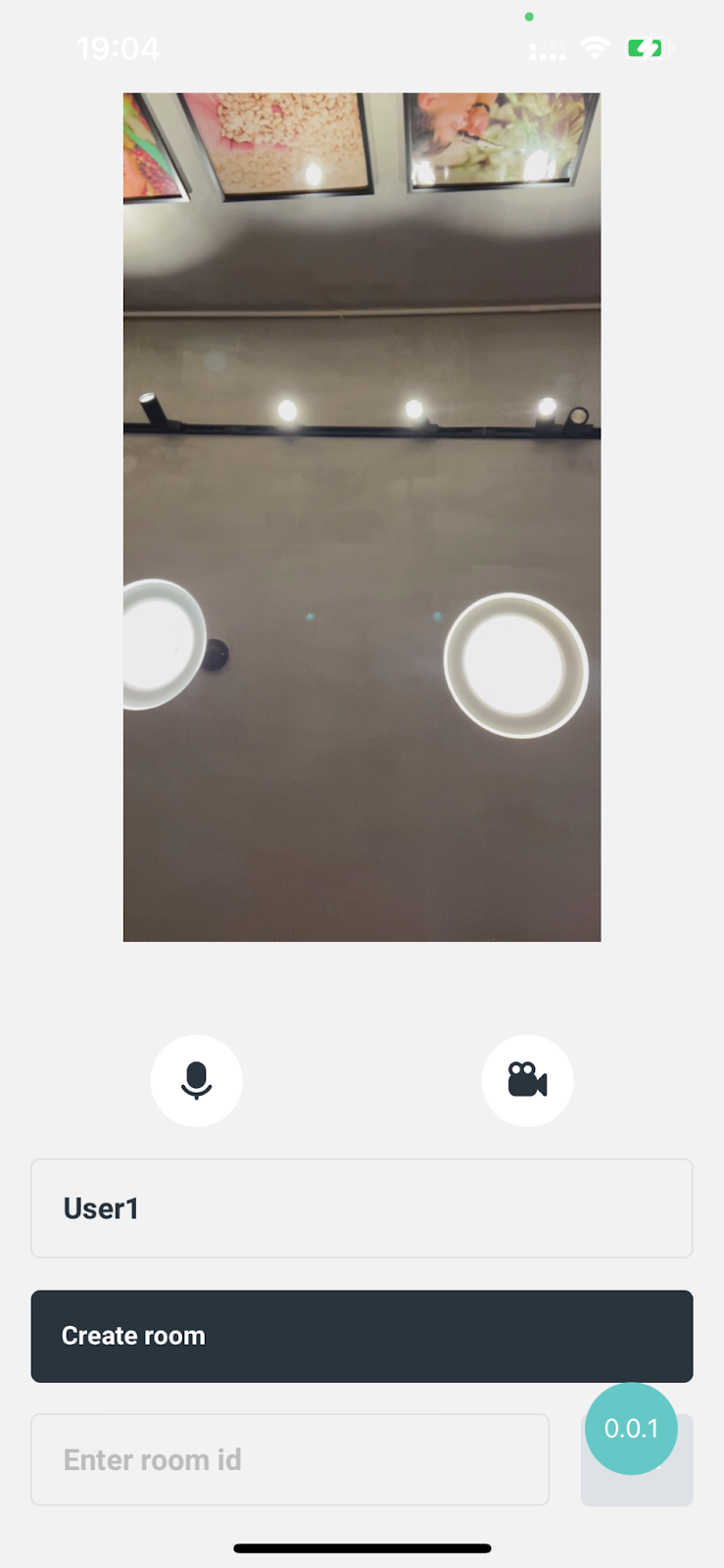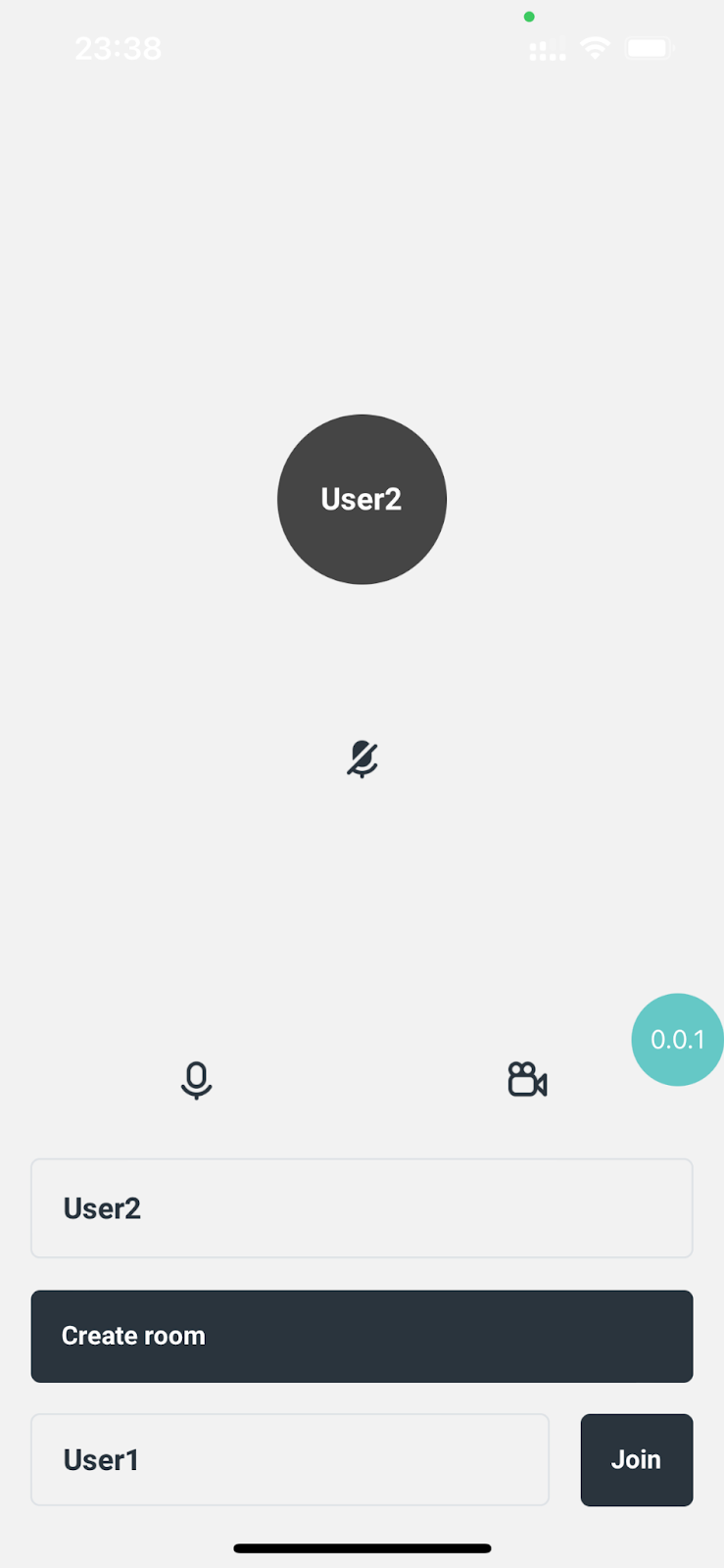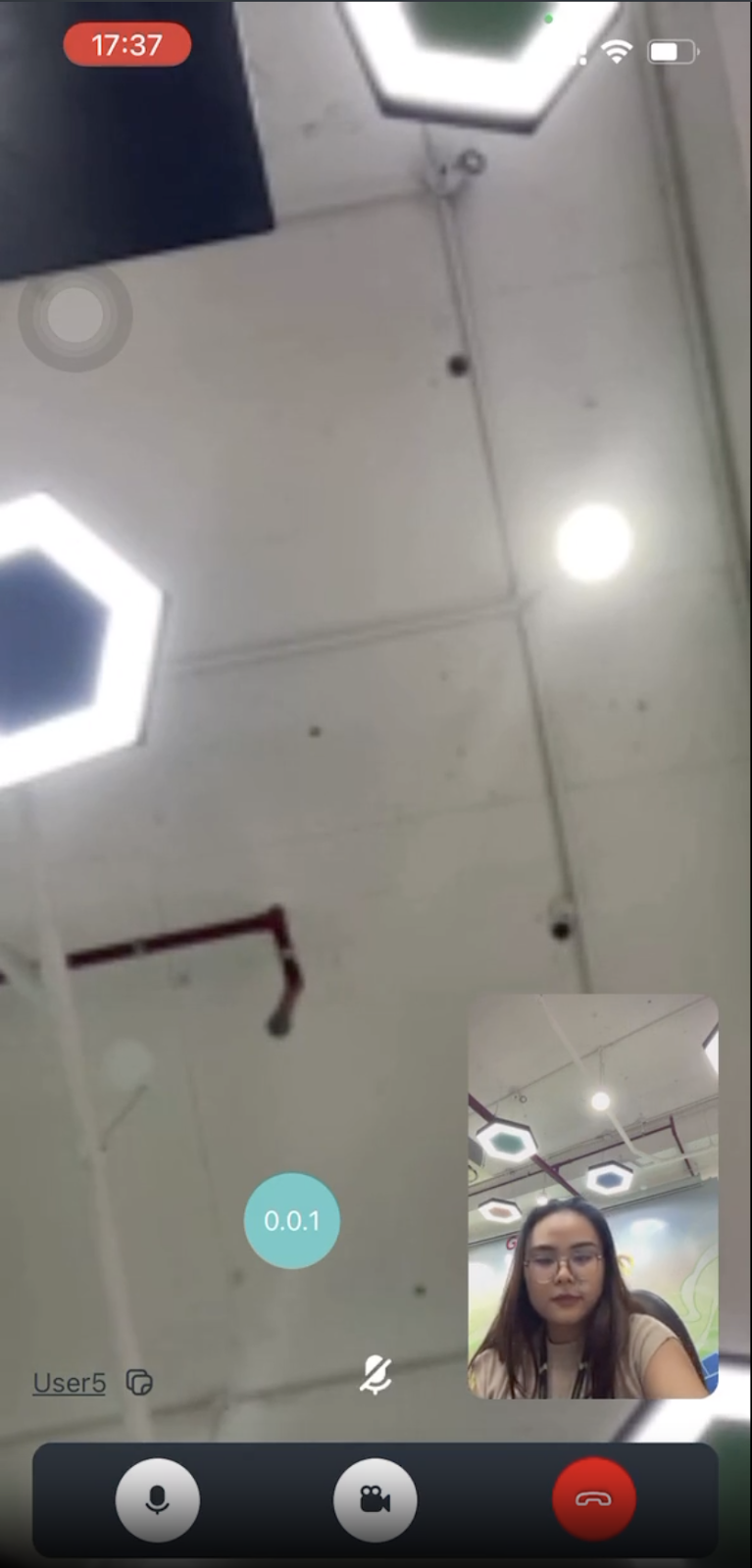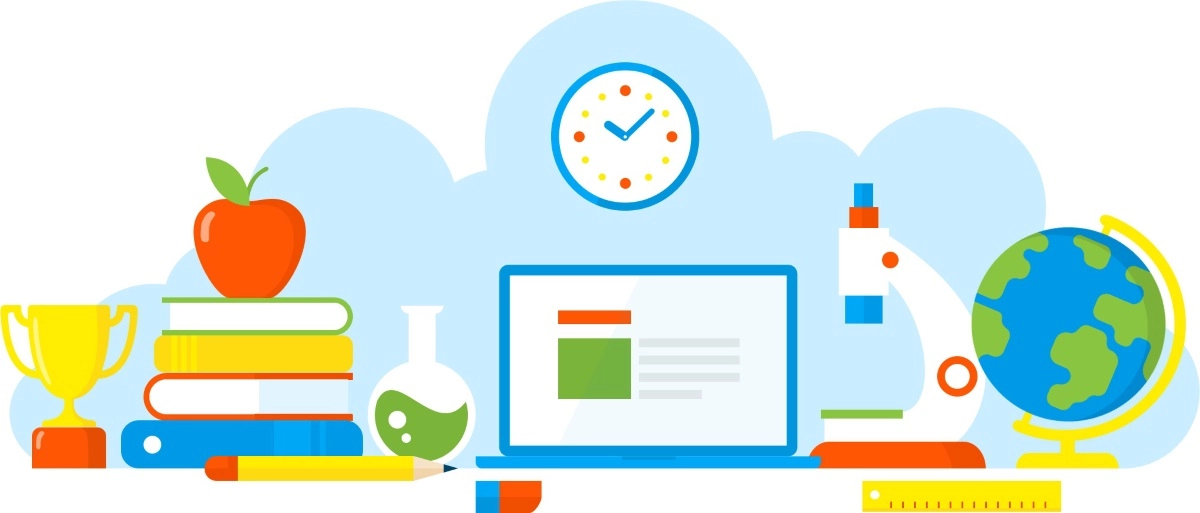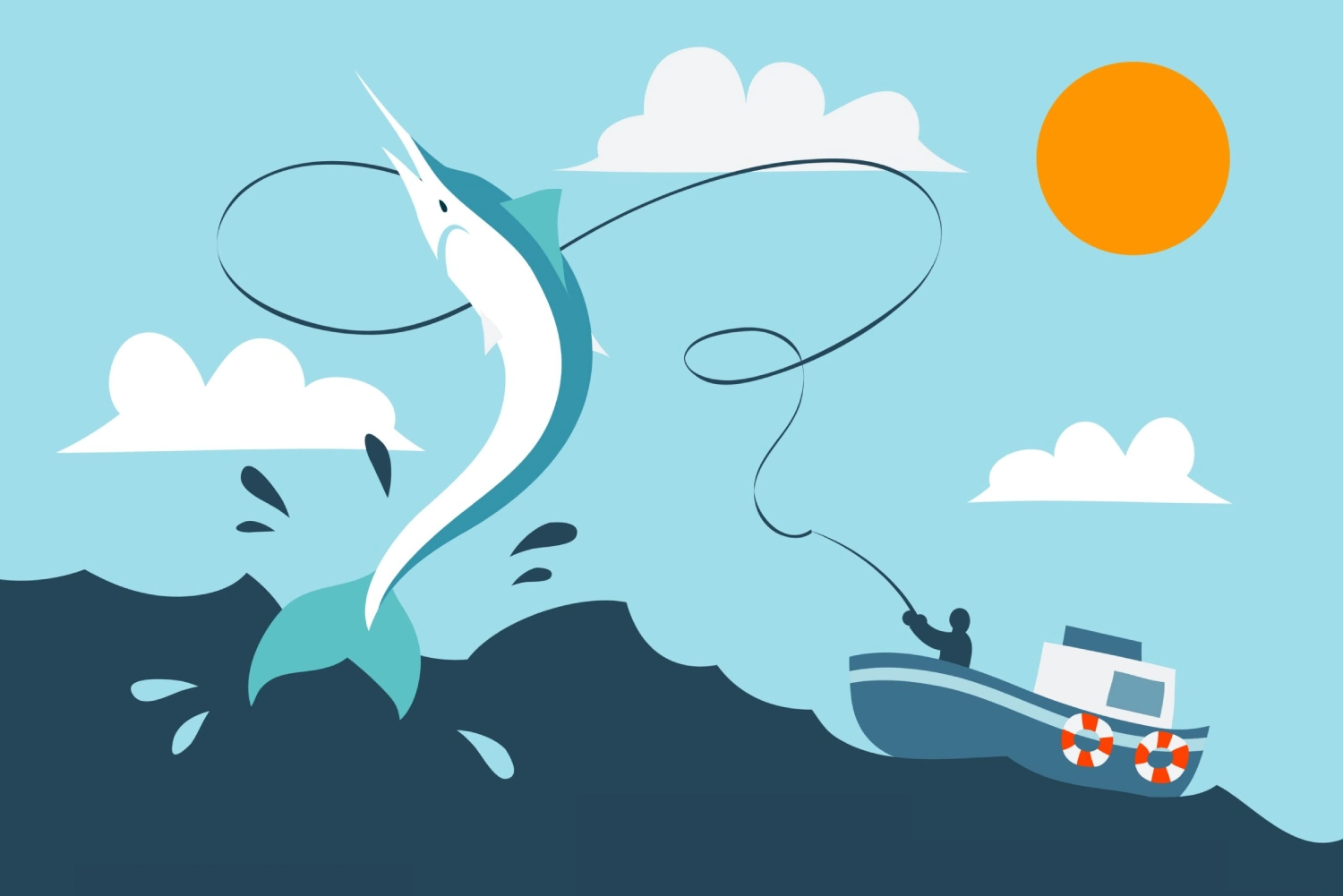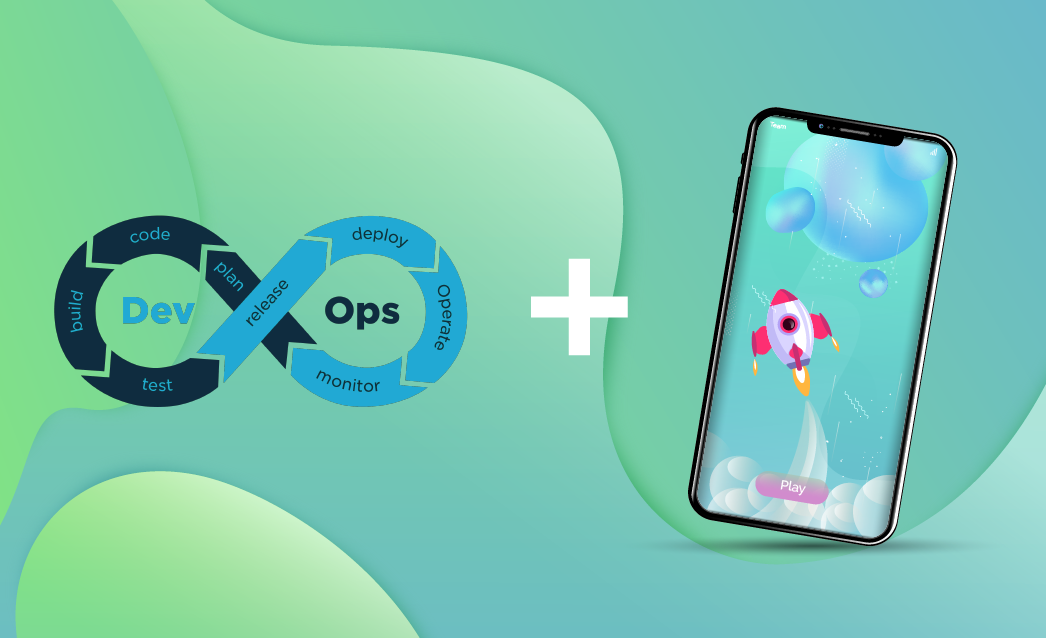1. Overview
1.1 React Native
React Native is a framework that brings React’s declarative UI framework into mobile platforms. It allows developers to create cross-platform apps that render natively on iOS and Android platforms, sharing a single codebase. This enables faster development and easier maintenance compared to traditional native app development.
1.2 WebRTC
WebRTC stands for Real time communication for the web. It supports video, voice, and generic data to be sent between peers and available on all modern browsers as well as on native clients for all major platforms.
WebRTC go through common application flow:
- Access media devices (microphone, camera)
- Create peer-to-peer connections
- Discover peer connections
- Start streaming
2. How does WebRTC work
To have more understanding about how WebRTC works, we will go through some technical terms.
2.1 Peer-to peer (P2P) connection
A Peer-to-peer connection is an infrastructure that allows two or more end devices to share resources and communicate with each other directly without sending data to a separate server.
In the P2P connection, each end device is considered a “peer”. Each peer acts as client and server itself, it shares and receives resources with other peers.
2.2 Signaling server
With the help of a Signaling server, two peers can connect by providing SDP and ICE server configuration, which is generated by two servers: STUN or a TURN server. Their mission is to create ICE Candidates for each peer and exchange it with other peers. The process to exchange the information is signaling.
A Signaling server is basically a real-time server such as Firebase Firestore, WebSocket, OneSignal.
2.3 SDP
SDP stands for Session Description Protocol, which contains details of real-time communication sessions between two peers. Simple example is if a device’s camera is turned off, SDP will include this data to send to another device
SDP is part of creating a P2P connection process. The SDP negotiation involves two steps: offer and answer.
2.4 ICE candidates
To put it simply, ICE Candidates act as addresses of each peer which is used to connect with other peers through the internet. One client can have multiple ICE Candidates containing information about transport protocol, port number and IP addresses.
2.5 Visualize making one P2P connection
How exactly can webRTC establish peer-to-peer connection with these technical terms above? A simple graph will visualize steps on how webRTC can establish the connection.
In this example, Peer-1 is the device which wants to communicate with Peer-2
First, Peer-1 creates an Offer containing SDP and ICE Candidates generated by WebRTC API and sends it to the Signaling Server.
Meanwhile, Peer-2 listens to the Signaling server to receive the incoming Offer. After receiving the Peer-1’s Offer, Peer-2 creates an Answer which also contains the same structure data and sends it back to the Signaling Server.
Now, both devices have each other’s configuration. The peer connection is established.
2.6 Visualize making multiple P2P connections
How about another scenario where a device named Peer-3 wants to join the communication with Peer-1 and Peer-2 ?
Let’s assume Peer-1 and Peer-2 already establish a connection following steps in Section 2.5, An simple example demonstrates how Peer-3 can establish connection with Peer-1 and Peer-2.
When Peer-3 joins the communication, it will need to create a number of Offers depending on current total participants. In this case, there are already two participants in the group so that Peer-3 creates two Offers and sends these to the Signaling Server.
Although Peer-1 and Peer-2 already had P2P connection, they also needed to listen to new Offers coming from the Signaling Server. When both devices receive an Offer, each peer creates an Answer and sends it back to the Signaling Server.
As a result, Peer-3 receives both Answers from other peers so the P2P connections between three peers are established successfully.
2.7 Simplify steps create P2P connections in terms of implementation
What does the Offeror do?
- Init peer connection
- Add local media stream to created peer connection
- Create offer and store offer as local description
- Send offer SDP and ICE Candidates to Signaling server
- Add event listen to coming answer
- Add event listen to track coming answer’s media stream
- Add event listen to coming answerer’s ICE Candidates
- When receiving answer, store answer as remote description and add answerer’s ICE Candidates into Peer connection
What does the Answerer do?
- Init peer connection
- Add local media stream to created peer connection
- Receive offer from Signaling server and store as remote description
- Create answer and store answer as local description
- Send answer SDP & ICE Candidates back to Signaling server
- Add event listen to track coming offeror’s media stream
- Add event listen to coming offer’s ICE Candidates
- Add offeror’s ICE Candidates into Peer connection
Section 3 will demonstrate detail implementation for these steps above
3. Building demo: Group video call
3.1 Overview features
The source code of this demo is here. Basic feature for group video call including:
- Create new room or join room with existed room ID
- Control microphone and camera
- One of the users in the call hangs up. App allows the call still processing unless everyone leaves the room
- No limit participants
Next, we will go through step by step how we implement all these features.
3.2 Initialize React Native app
First, init React Native project with command line:
npx react-native@latest init YourProjectName
Install the react-native-webrtc module:
npm i react-native-webrtc
If you take a look at source code and wonder why there are plenty of packages beside react-native-webrtc. It’s because we used the rn-base-project-typescript to generate the source template for quick initialization. It only takes 1 command to install all needed packages to start the RN project and generate the best practice structure ready to implement immediately without spending too much time on initialization. More information is here.
Let’s go back to our demo, you also need to do extra steps depending on your target platform.
For iOS, add permissions for camera and microphone in Info.plist:
NSCameraUsageDescription
Camera Permission description
NSMicrophoneUsageDescription
Microphone Permission description
For Android, add permissions in AndroidManifest.xml:
android:name=”android.permission.INTERNET” />
android:name=”android.permission.CAMERA” />
android:name=”android.permission.RECORD_AUDIO” />
android:name=”android.permission.ACCESS_NETWORK_STATE” />
android:name=”android.permission.CHANGE_NETWORK_STATE” />
android:name=”android.permission.MODIFY_AUDIO_SETTINGS” />
To run the project, simply run command based on your target platform:
npx react-native run-android
npx react-native run-ios
3.3 Setup Signaling server structure with Firebase Firestore
In this demo, we used Firebase Firestore as our Signaling Server.
For installation and configuration with Firestore, I recommend checking the original document from React Native Firebase because it’s already clear and informative to configure. The document is here.
Next, we will jump to the Firestore structure part. First, we create a collection named Rooms to manage all room calls.
Room keys use the name of who created the room. Please note that, we used the name as room id for joining the room faster without copying and pasting the key in several devices, but in real situations, we recommend to work with UUID instead.
Each Room has 2 collections: Participants and Connections.
Participants is a collection listing all active participants in the room.
Each participant has information about their name and microphone, camera status. If the participant turns off their microphone which results in the microphone value being false. This logic applies the same for the camera value.
Connections collection containing all peer-to-peer connections. For example, if there are 3 participants in the room, there should be 3 peer-to-peer connections in the list.
The number of connections is calculated by this formula, n is total participants:
n (n – 1) / 2
Each connection has 2 collections answerCandidates and offerCandidates and contains 4 key-value pairs:
- answer: SDP of the responder
- offer: SDP of the requester
- requester: name of the requester
- responder: name of the responder
answerCandidates holds a list of ICE Candidates of an answerer and will be tracked and added by offeror to their PeerConnection. It’s the same with the offerCandidates which records data for an offeror.
So now we’re all set for the implementation part.
3.4 Construct states and refs
Location: src/screens/HomeComponent/HomeScreen.tsx
const [roomId, setRoomId] = useState(”)
const [localStream, setLocalStream] = useState | undefined>()
const [userName, setUserName] = useState(”)
const [screen, setScreen] = useState(Screen.CreateRoom)
const [remoteMedias, setRemoteMedias, remoteMediasRef] = useStateRef
<{ [key: string]: MediaControl }>({})
const [remoteStreams, setRemoteStreams, remoteStreamsRef] = useStateRef
<{ [key: string]: MediaStream }>({})
const [peerConnections, setPeerConnections] = useStateRef
<{ [key: string]: RTCPeerConnection}>({})
const [totalParticipants, setTotalParticipants] = useState(0)
const [localMediaControl, setLocalMediaControl] = useState({
mic: microphonePermissionGranted,
camera: cameraPermissionGranted,
})
Explanation:
- roomId: stored room id that current user create room or input to join
- localStream: media stream of user’s local device
- screen: current display screen type, default value is CreateRoom
scr/screens/HomeComponent/types.ts
export enum Screen {
CreateRoom, // create or join room
InRoomCall, // participate in room call
}
- remoteMedias: arrays have microphone and camera status of other user ‘s remote devices
export type MediaControl = {
mic: boolean
camera: boolean
}
- remoteStreams: same with localStreams but for other user’s MediaStream
- peerConnections: all P2P connections of current user with other users
- totalParticipants: number of users in one room call
- localMediaControl: same with remoteMedias but locally, it presented the status of the user’s local media device.
3.5 Request camera & microphone permission
Check and request permission with custom hook from hooks/useRequestPermissions.ts
const {
// Boolean value if permission is granted
cameraPermissionGranted,
microphonePermissionGranted,
// request permission methods
requestMicrophonePermission,
requestCameraPermission,
} = usePermission()
The layout when requesting permission:
After permission granted, we will call method openMediaDevices to show our MediaStream locally:
const openMediaDevices = useCallback(async (audio: boolean,video: boolean) => {
// get media devices stream from webRTC API
const mediaStream = await mediaDevices.getUserMedia({
audio,
video,
})
// init peer connection to show user’s track locally
const peerConnection = new RTCPeerConnection(peerConstraints)
// add track from created mediaStream to peer connection
mediaStream.getTracks().forEach(track =>
peerConnection.addTrack(track, mediaStream)
)
// set mediaStream in localStream
setLocalStream(mediaStream)
}, [])
As a result, we can see our camera display in the screen:
3.6 Create room
Default screen is CreateRoom screen, when the user has already entered the name, the button “Create room” will be enabled and the user can click on. This action triggers the function called createRoom:
const createRoom = useCallback(async () => {
// create room with current userName and set createdDate as current datetime
const roomRef = database.collection(FirestoreCollections.rooms).doc(userName)
await roomRef.set({createdDate: new Date()})
// create participants collection to room “userName”
roomRef.collection(FirestoreCollections.participants).doc(createdUserName)
.set({
// control mic and camera status of current user’s device
mic: localMediaControl?.mic,
camera: localMediaControl?.camera,
name: userName,
})
setRoomId(roomRef.id) // store new created roomId
setScreen(Screen.InRoomCall) // navigate to InRoomCall screen
// add listener to new peer connection in Firestore
await listenPeerConnections(roomRef, userName)
…
The function triggers navigating to InRoomCall screen immediately
For more understanding, users who join will be the one sending an offer to existing participants. So that’s why inside createRoom, we only have a method to listen to new coming connections. It’s redundant to create an offer and initiate the peer connection first with no one in the room.
In listenPeerConnections does:
- Listen to new changes in Connections and loop to find if there are Offers sent to the current user. Current users can have multiple connections so the data will be created one by one when it loops. Each connection will be distinguished with the requester name to store in defined states and refs above.
const listenPeerConnections = useCallback(async (roomRef, userName) => {
roomRef.collection(FirestoreCollections.connections).onSnapshot(
connectionSnapshot => {
// looping changes from collection Connections
connectionSnapshot.docChanges().forEach(async change => {
if (change.type === ‘added’) {
const data = change.doc.data()
// find connections that request answer from current user
if (data.responder === userName) {
…
- Get control and MediaStream data from requester to store in remoteMedias and remoteStreams
if (data.responder === createdUserName) {
// get requester’s location from collection Participants
const requestParticipantRef = roomRef.collection(
FirestoreCollections.participants).doc(data.requester)
// get requester’s data from requester’s location
const requestParticipantData = (await requestParticipantRef.get()).data()
// store requester’s control status in remoteMedias
setRemoteMedias(prev => ({
…prev,
[data.requester]: {
mic: requestParticipantData?.mic,
camera: requestParticipantData?.camera
},
}))
// init requester’s remoteStream to add track data from Peer Connection later
setRemoteStreams(prev => ({
…prev,
[data.requester]: new MediaStream([]),
}))
- Init PeerConnection and control MediaStream for both requester and responder
…
// init PeerConnection
const peerConnection = new RTCPeerConnection(peerConstraints)
// add current user’s stream to created PC (Peer Connection)
localStream?.getTracks().forEach(track => {
peerConnection.addTrack(track, localStream)
})
// get requester’s MediaStream from PC
peerConnection.addEventListener(‘track’, event => {
event.streams[0].getTracks().forEach(track => {
const remoteStream = remoteStreams[data.requester] ?? new MediaStream([])
remoteStream.addTrack(track)
// and store in remoteStreams as it’s initialized before
setRemoteStreams(prev => ({
…prev,
[data.requester]: remoteStream,
}))
})
})
- Processing SDP data inside Offer and Answer
// get location of connection between requester and current user
const connectionsCollection = roomRef.collection(
FirestoreCollections.connections)
const connectionRef = connectionsCollection
.doc(`${data.requester}-${userName}`)
// get data from requester-user’s connection
const connectionData = (await connectionRef.get()).data()
// receive offer SDP and set as remoteDescription
const offer = connectionData?.offer
await peerConnection.setRemoteDescription(offer)
// create answer SDP and set as localDescription
const answerDescription = await peerConnection.createAnswer()
await peerConnection.setLocalDescription(answerDescription)
// send answer to Firestore
const answer = {
type: answerDescription.type,
sdp: answerDescription.sdp,
}
await connectionRef.update({ answer })
- Collect and add ICE Candidates for both users
…
// create answerCandidates collection
const answerCandidatesCollection = connectionRef.collection(
FirestoreCollections.answerCandidates)
// add current user’s ICE Candidates to answerCandidates collection
peerConnection.addEventListener(‘icecandidate’, event => {
if (event.candidate) {
answerCandidatesCollection.add(event.candidate.toJSON())
}
})
// collect Offer’s ICE candidates from offerCandidates collection and add in PC
connectionRef.collection(FirestoreCollections.offerCandidates)
.onSnapshot(iceCandidateSnapshot => {
iceCandidateSnapshot.docChanges().forEach(async iceCandidateChange => {
if (iceCandidateChange.type === ‘added’) {
await peerConnection.addIceCandidate(
new RTCIceCandidate(iceCandidateChange.doc.data()))
}
})
})
- Store Peer Connection
…
setPeerConnections(prev => ({
…prev,
[data.requester]: peerConnection,
}))
…
So we’re done with listening to new connections. Let’s move on to the later part of how the Offeror creates an offer to Answerers.
3.7 Join room
The scenario will be different because the current user will now be the one who joins the room, they will enter the existing room id and click on the “Join” button.
When the user clicks on “Join”, there’s a checkRoomExist to check if the entered id exists:
const checkRoomExist = useCallback(() => {
// get room data based on the entered room id
const roomRef = database.collection(FirestoreCollections.rooms).doc(roomId)
roomRef.get().then(docSnapshot => {
if (!docSnapshot.exists) {
Alert.alert(‘Room not found’)
setRoomId(”)
return
} else {
joinRoom(roomRef) // process to join room if room is existed
}
})
…
In joinRoom:
const joinRoom = useCallback(async (roomRef) => {
// register new PeerConnection to FireStore
await registerPeerConnection(roomRef, userName)
// add user data to participants collection
await roomRef.collection(FirestoreCollections.participants)
.doc(userName).set({
mic: localMediaControl?.mic,
camera: localMediaControl?.camera,
name: userName,
})
// also listen to new coming PeerConnections
await listenPeerConnections(roomRef, userName)
setScreen(Screen.InRoomCall) // navigate to InRoomCall screen
…
Not only does a joined user need to create offers sending to remain participants but also requisite to listen to later connections because we don’t know exactly if this user is the last one joining the call.
However if we’re in the scenario with the need to limit participants, we can base on the number of people to detect when there is no need to add listenPeerConnections for the one who is the last participant.
Let’s get back to continuous application flow, after processing in the joinRoom method, users will be navigated to the InRoomCall screen as well but the difference is there were participants in the call.
In registerPeerConnection does:
- Get all participants data from Participants collection to loop and create Offer for each participant
const registerPeerConnection = useCallback(async (roomRef, userName) => {
// loop all participants data
const participants = await roomRef.collection(
FirestoreCollections.participants).get()
participants.forEach(async participantSnapshot => {
const participant = participantSnapshot.data()
…
- Store all participants’s control status and init participants MediaStream
…
const participant = participantSnapshot.data()
// store participant’s control status in remoteMedias
setRemoteMedias(prev => ({
…prev,
[participant.name]: {
mic: participant?.mic,
camera: participant?.camera,
},
}))
// init participant’s remoteStream to add track data from Peer Connection later
setRemoteStreams(prev => ({
…prev,
[participant.name]: new MediaStream([]),
}))
…
- Init PeerConnection and control MediaStream
…
// init peer connection
const peerConnection = new RTCPeerConnection(peerConstraints)
// add current user’s stream to created PC (Peer Connection)
localStream?.getTracks().forEach(track => {
peerConnection.addTrack(track, localStream)
})
// get participant’s MediaStream from PC
peerConnection.addEventListener(‘track’, event => {
event.streams[0].getTracks().forEach(track => {
const remoteStream = remoteStreams[participant.name] ?? new MediaStream([])
remoteStream.addTrack(track)
// and store in remoteStreams as it’s initialized before
setRemoteStreams(prev => ({
…prev,
[participant.name]: remoteStream,
}))
})
})
…
- Processing SDP data inside Offer and Answer
…
// create connection between current user and participant
const connectionsCollection = roomRef.collection(
FirestoreCollections.connections)
const connectionRef = connectionsCollection
.doc(`${createdUserName}-${participant.name}`)
// create offer SDP and set localDescription
const offerDescription = await peerConnection.createOffer(sessionConstraints)
peerConnection.setLocalDescription(offerDescription)
// send offer to Firestore
const offer = {
type: offerDescription.type,
sdp: offerDescription.sdp,
}
await connectionRef.set({
offer,
requester: createdUserName,
responder: participant.name,
})
// add listener to coming answers
connectionRef.onSnapshot(async connectionSnapshot => {
const data = connectionSnapshot.data()
// if PC does not have any remoteDescription and answer existed
if (!peerConnection.remoteDescription && data?.answer) {
// get answer and set as remoteDescription
const answerDescription = new RTCSessionDescription(data.answer)
await peerConnection.setRemoteDescription(answerDescription)
}
})
…
- Collect and add ICE Candidates for both users
// create offerCandidates collection
const offerCandidatesCollection = connectionRef.collection(
FirestoreCollections.offerCandidates)
// add current user’s ICE Candidates to offerCandidates collection
peerConnection.addEventListener(‘icecandidate’, event => {
if (event.candidate) offerCandidatesCollection.add(event.candidate.toJSON())
})
// add listener to answerCandidates collection to participant’s ICE Candidates
connectionRef.collection(FirestoreCollections.answerCandidates).onSnapshot(iceCandidatesSnapshot => { iceCandidatesSnapshot
.docChanges().forEach(async change => {
if (change.type === ‘added’) {
// get Answer’s ICE candidates and add in PC
await peerConnection.addIceCandidate(
new RTCIceCandidate(change.doc.data()))
}
})
})
- Store Peer Connection
…
setPeerConnections(prev => ({
…prev,
[participant.name]: peerConnection,
}))
…
It’s the end for core implementation of creating room calls. Users can communicate with each other now via creating rooms or adjoining rooms with id
3.5 Control media devices
Beside the core feature above, users can control their camera and microphone and know other user’s control status via Signaling server. There are states that we used as beginning to store control data.
const [remoteMedias, setRemoteMedias, remoteMediasRef] = useStateRef
<{ [key: string]: MediaControl }>({})
const [localMediaControl, setLocalMediaControl] = useState({
mic: microphonePermissionGranted,
camera: cameraPermissionGranted,
})
When a user turns on/off their microphone, it will trigger toggleMicrophone:
// toggle local microphone
const toggleMicrophone = useCallback(() => {
// check if permission is granted, if not call request permission
if (microphonePermissionGranted) {
// update state in local mediaControl
setLocalMediaControl(prev => ({
…prev,
mic: !prev.mic,
}))
// update mic value of localStream
localStream?.getAudioTracks().forEach(track => {
localMediaControl?.mic ?
track.enabled = false :
track.enabled = true
})
if (roomId) {
// get location of current room that user’s in
const roomRef = database.collection(FirestoreCollections.rooms)
.doc(roomId)
// get location of user’s participant data
const participantRef = roomRef.collection(
FirestoreCollections.participants).doc(userName)
// update mic value in Firestore
participantRef.update({
mic: !localMediaControl?.mic,
})
} else { requestMicrophonePermission() }
}
…
The same with camera, toggleCamera will be triggered when user clicks on Camera button:
const toggleCamera = useCallback(() => {
// check if permission is granted, if not call request permission
if (cameraPermissionGranted) {
// update state in local mediaControl
setLocalMediaControl(prev => ({
…prev,
camera: !prev.camera,
}))
// update camera value of localStream
localStream?.getAudioTracks().forEach(track => {
localMediaControl?.camera ?
track.enabled = false :
track.enabled = true
})
if (roomId) {
// get location of current room that user’s in
const roomRef = database.collection(FirestoreCollections.rooms)
.doc(roomId)
// get location of user’s participant data
const participantRef = roomRef.collection(
FirestoreCollections.participants).doc(userName)
// update camera value in Firestore
participantRef.update({
camera: !localMediaControl?.camera,
})
} else { requestCameraPermission() }
}
…
There is useEffect has a listener to new changes from collection Participants so that whenever other participants change their control status, we can update remoteMedias data immediately to display layout in the app.
- Listen to new changes from Participants list
useEffect(() => {
if (roomId) {
const roomRef = database.collection(FirestoreCollections.rooms)
.doc(roomId)
const participantRef = roomRef.collection(
FirestoreCollections.participants)
if (participantRef) {
// listener to new changes from Participants collection
participantRef.onSnapshot(snapshot => {
// get current total participants in Firestore
if (totalParticipants !== snapshot.size) {
setTotalParticipants(snapshot.size)
}
// loop through new data changes
snapshot.docChanges().forEach(async change => {
…
- Inside the loop function, different logic will be applied depending on data change type. In this case, we will only consider the “modified” case which is new updates of control status’s other user
…
const data = change.doc.data()
if (change.type === ‘modified’) {
// ignore changes from current user
if (data?.name !== userName) {
// update new change in remoteMedias
setRemoteMedias(prev => ({
…prev,
[data.name]: {
camera: data?.camera,
mic: data?.mic,
},
}))
}
…
With this approach, whenever a remote user turns on/off their camera or microphone, we can display a reference layout to showcase their control status. It can be a small muted microphone in the user’s frame or display default avatar when turned off the camera.
3.6 Hang up
When one of the users leaves the room, in this demo we still let the call continue to process if this user is not the last one in the room.
User leaves the room by clicking the bottom red button, it will trigger hangUp function:
- Stop all track MediaStream for local and remote
const hangUp = useCallback(async () => {
// stop local stream
localStream?.getTracks()?.forEach(track => {
track.stop()
})
// stop remote streams
if (remoteStreams) {
Object.keys(remoteStreams).forEach(remoteStreamKey => {
remoteStreams[remoteStreamKey].getTracks()
.forEach(track => track.stop())
})
}
…
- Close Peer Connection
if (peerConnections) {
Object.keys(peerConnections).forEach(peerConnectionKey => {
peerConnections[peerConnectionKey].close()
})
}
- There are 2 cases when hang up, the first case is the last user who leaves the room. We will delete all room data so as not to store any redundant data in Firestore.
// get location of current room
const roomRef = database.collection(FirestoreCollections.rooms).doc(roomId)
if (totalParticipants === 1) {
const batch = database.batch()
// delete all data Participants
const participants = await roomRef.collection(
FirestoreCollections.participants).get()
participants?.forEach(doc => {
batch.delete(doc.ref)
})
// delete all data Connections
const connections = await roomRef.collection(
FirestoreCollections.connections).get()
connections?.forEach(doc => {
batch.delete(doc.ref)
})
// delete current room detail data and this room in Rooms
await batch.commit()
await roomRef.delete()
…
- Second case is when there are still participants in the room. We just need to delete this user from Participants and all related Connections that has this user as responder or requester
…
// delete user data in Participants collection
await roomRef.collection(FirestoreCollections.participants)
.doc(userName).delete()
// filter data has userName is requester or responder
const Filter = firebase.firestore.Filter
const connectionSnapshot = await roomRef
.collection(FirestoreCollections.connections)
.where(
Filter.or(
Filter(‘requester’, ‘==’, userName),
Filter(‘responder’, ‘==’, userName)
))
.get()
// delete all filtered connections one by one
connectionSnapshot?.docs?.forEach?.(async doc => {
const batch = database.batch()
// delete all data answerCandidates
const answerCandidates = await doc.ref.collection(
FirestoreCollections.answerCandidates).get()
answerCandidates.forEach(answerDoc => {
batch.delete(answerDoc.ref)
})
// delete all data offerCandidates
const offerCandidates = await doc.ref.collection(
FirestoreCollections.offerCandidates).get()
offerCandidates.forEach(offerDoc => {
batch.delete(offerDoc.ref)
})
// delete connection detail and remove it from Connections
await batch.commit()
doc.ref.delete()
- On the participants side, when someone hangs up, we also handle logic to update participants’ remote data which is in the same useEffect listening to Participants collection changes. It’s different from handle for control status, in this case we focus on change type “removed” instead
…
else if (change.type === ‘removed’) {
// update remote streams to remove leaver’s streams
setRemoteStreams(prev => {
const newRemoteStreams = {…prev}
delete newRemoteStreams[data?.name]
return newRemoteStreams
})
// update remote medias to remove leaver’s control status
setRemoteMedias(prev => {
const newRemoteMedias = {…prev}
delete newRemoteMedias[data?.name]
return newRemoteMedias
})
…
Lastly, we will reset all data and navigate back to CreateRoom screen
…
// reset data
setRoomId(”)
setScreen(Screen.CreateRoom)
setRemoteMedias({})
setRemoteStreams({})
setPeerConnections({})
setTotalParticipants(0)
// if user still enable camera or microphone, call openMediaDevices to show it locally
if (localMediaControl?.camera || localMediaControl?.mic) {
openMediaDevices(localMediaControl?.mic, localMediaControl?.camera)
}
4. Conclusion
WebRTC is a powerful technology to help you build the app which has the smooth and low-latency communication facilitated, ensuring an immersive group video calling experience. There are so many advantages about WebRTC features and development process
4.1 Pros
- Free open-source and quick project development
- Full structured documentation with plenty of demos for each webRTC API
- Security with always-on voice and camera encryption
- Powerful multimedia capabilities on the web rather than video call: file exchange, chat channel, screen sharing, v.v
Like any technology, it may come with some of Cons we need to consider when using:
4.2 Cons
- No way to track the active status of remote media devices which results in increasing database usage for controlling extra flow
- Decrease call quality with low internet speed
- Not suitable for streaming events have large volume load
Resources
- Demo source code (included video demo)
https://github.com/saigontechnology/React-Native/tree/main/demo/WebRTC
References
- React Native Firestore: https://rnfirebase.io/firestore/usage
- React Native WebRTC: https://github.com/react-native-webrtc/react-native-webrtc




